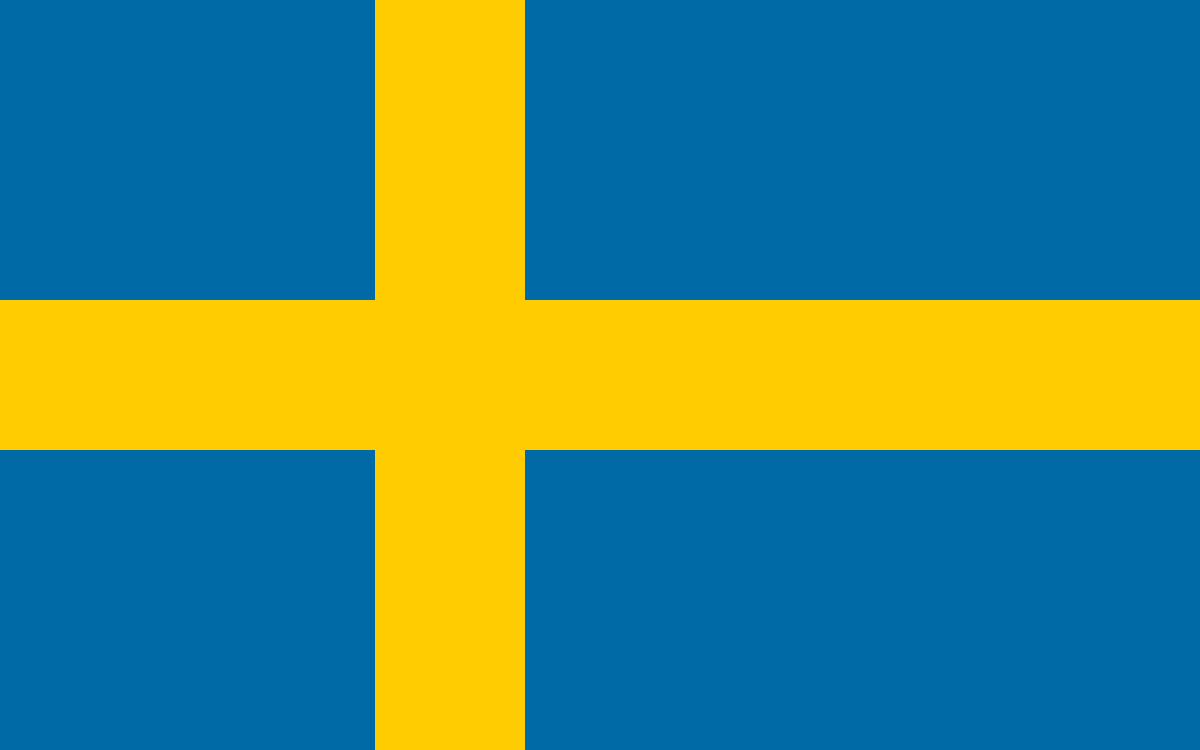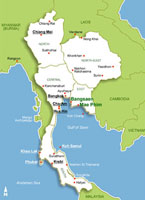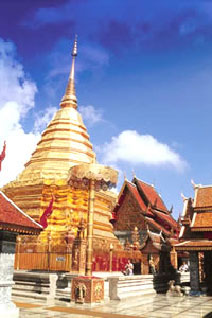 | The Thai Culture Thai Calendar: The year count starts from 543 BC (2017 is year 2560 in Thailand) Name: Thailand (Prathet Thai) |
| Religion in Thailand About 95% of the Thai population adheres to Buddhism (Theravada Buddhism), which has been the state religion since the 13th century. The Malaysian minority adheres to Islam. Hinduism and Sikhism are also present, and, especially in the mountainous regions in the north, a kind of animistic, often syncretistic and shamanistic, spirit worship. A Christian minority exists, mainly among the hill tribes where the Christian mission is active. Theravada was introduced by the Mon people in the 6th century AD; then Indian Brahmanism also gained a foothold, and has since then lived on at the royal court. During the 10th century, Mahayana Buddhism dominated, but it was replaced in the 13th century by the Theravada from Ceylon. There are about 250,000 Buddhist monks in Thailand and over 40,000 temples, of which about 30,000 are monastery temples. The Buddhist monk order has great influence, and it is customary to let sons spend time as novices in monasteries, which also function as schools, and for at least one son to become a monk. | 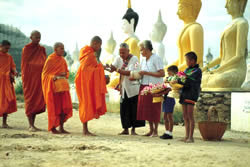 |
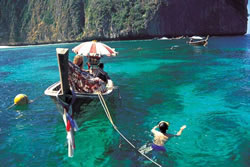 | The Climate Thailand has a typical tropical climate with three different seasons - the hot period from March - May; rain (with a lot of sun) from June - September, and cool from October - February. The rainy season does not mean it rains all day or every day. When it rains, it's usually for an hour or two in the evening. The climate in southeastern Thailand is even and pleasant, without the heavy monsoon found in western/southern Thailand. For trips to Thailand between April-September, it's good to know that the best weather is then on the east coast. Southeastern Thailand is considered to have the country's best climate with mild monsoon and low rainfall. The safest sun chances even during the so-called rainy season. Think about sun protection. Watch out for the strong sun in Thailand. At three in the afternoon, the sun's rays are very strong. A sun hat, t-shirt, shade, and sunscreen with a high protection factor are recommended. |
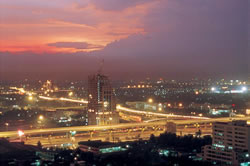 | The Coast Near Bangkok
|
Mae Phim
In Mae Phim, you meet genuine Thailand, far from the tourist tracks, and you are always greeted by smiling people from the local population who contribute to the fantastic experience. The calm atmosphere far from the stress of tourist areas makes Mae Phim a perfect destination even for families with children who wish for a calm and safe stay in one of Thailand's finest areas.
Mae Phim has a 3.2 km long wonderfully fine-grained sandy beach and by boat, you can reach your own paradise island in just fifteen minutes. The diving waters in the area are recognized as one of Thailand's absolute best with a rich underwater life in sparkling colors.
A short boat trip away is Koh Samet and Koh Man Nai where you experience the fascinating and captivating world of sea turtles. Here, it's never far to food and drink in a paradise world that is classified as a national park where both the sea, beach, and jungle offer relaxation and adventure alternately.
In Mae Phim, you will also find a rich selection of restaurants offering genuine Thai cuisine prepared with warmth and care from the best possible ingredients.
The local Seafood is of absolute top class and is a true culinary experience with fresh ingredients directly from the sea enjoyed sitting under a thatched roof in a gentle breeze from the sea.
The local market in the area offers insight into the locals' Thailand, far from the exploited tourist traps that only offer counterfeit copies of clothes and electronics. In Mae Phim, you instead experience a genuine market which, unfortunately, in many other parts of Thailand has been lost. Here, happy villagers offer everything that belongs to everyday life such as food, fruit, tools, and domestic clothes. A day at the market is an experience for everyone, and the feeling of real Thailand stays with you all the time.
.
